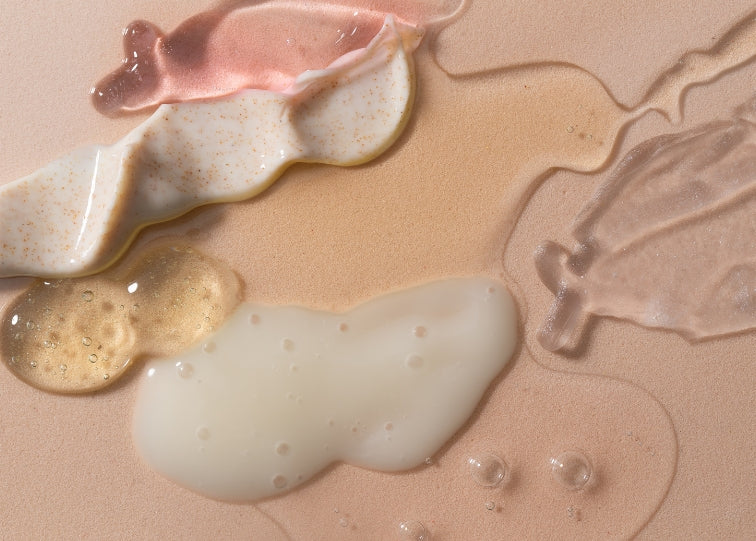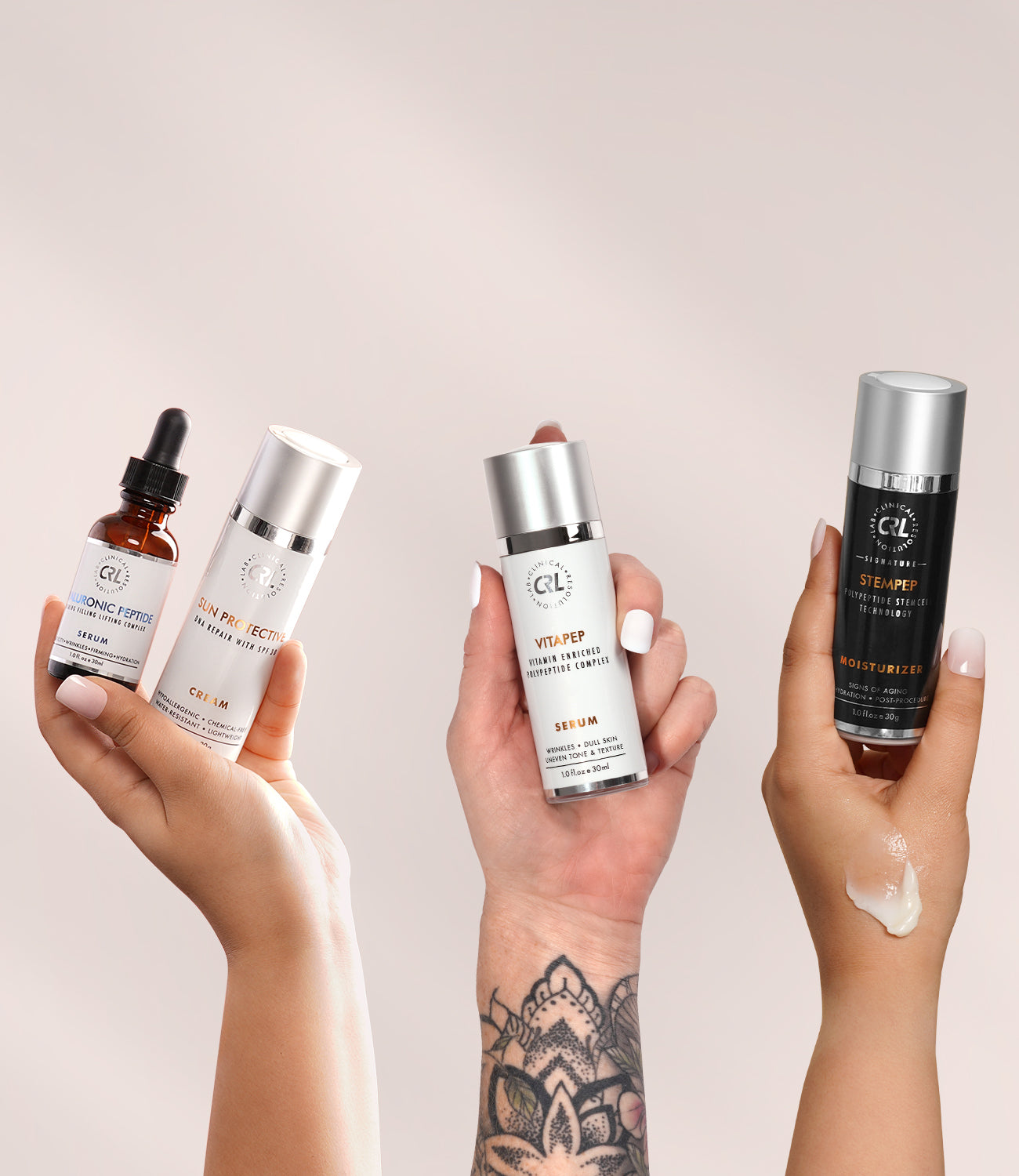
When choosing the right skincare products, the ingredient list can feel overwhelming. From acids to peptides, vitamins to botanicals, each active ingredient serves a purpose in improving skin health and appearance. Here’s a breakdown of some of the most common actives and what they can do for your skin.
1. Vitamin C (Ascorbic Acid, Derivatives)
-
What it does: Brightens skin, evens tone, reduces the appearance of hyperpigmentation, and defends against environmental damage.
-
Benefits: Antioxidant protection from free radicals, promotes collagen synthesis, and helps achieve a radiant, youthful glow.
- Best for: Dullness, uneven skin tone, fine lines, and sun damage
At CRL, we offer Liposomal Vitamin Serum in concentrations of 5%, 10%, or 20%. We made these different concentrations as a way for people with any skin type to use Vitamin C serum.
2. Retinol (Vitamin A Derivatives)
-
What it does: Speeds up cell turnover, stimulates collagen, and helps unclog pores.
-
Benefits: Reduces fine lines, wrinkles, acne, and uneven texture.
-
Best for: Anti-aging, acne-prone skin, and improving overall skin texture.
We offer Retinol in both Serum and Moisturizer versions. Our Age Defying Liposomal Retinol has 1% Pure Retinol in both types.
3. Hyaluronic Acid
-
What it does: A humectant that draws and retains water in the skin.
-
Benefits: Provides deep hydration, plumps skin, and strengthens the skin barrier.
-
Best for: Dryness, dehydration, loss of firmness, and sensitivity.
One of our best sellers is our Hyaluronic Peptide Serum, it has cross-linked Hyaluronic Acid, peptides, and growth factors to deliver deep hydration and visible anti-aging results.
4. Niacinamide (Vitamin B3)
-
What it does: Supports barrier repair, regulates oil production, and minimizes inflammation.
-
Benefits: Reduces redness, brightens dark spots, minimizes pore appearance, and strengthens skin resilience.
-
Best for: Sensitive skin, redness, enlarged pores, and uneven tone.
5. Peptides
-
What they do: Short chains of amino acids that signal the skin to produce more collagen and elastin.
-
Benefits: Improves skin firmness, reduces fine lines, and enhances repair and healing.
-
Best for: Aging skin, loss of elasticity, and maintaining a youthful appearance.
6. Alpha Hydroxy Acids (AHAs – Glycolic, Lactic Acid)
-
What they do: Exfoliate the skin’s surface by dissolving dead skin cells.
-
Benefits: Smooths texture, brightens skin, reduces pigmentation, and improves absorption of other actives.
- Best for: Dullness, rough texture, uneven skin tone.
The Ultimate Brightening Serum and Cream contain Lactic & Glycolic Acid, aimed to exfoliate and brighten the skin.
7. Beta Hydroxy Acid (BHA – Salicylic Acid)
-
What it does: Oil-soluble exfoliant that penetrates into pores.
-
Benefits: Clears clogged pores, reduces blackheads/whiteheads, and helps prevent breakouts.
-
Best for: Oily, acne-prone, or congested skin.
8. Tranexamic Acid
-
What it does: Targets stubborn hyperpigmentation and melasma.
-
Benefits: Brightens skin tone, reduces dark spots, and complements other brightening ingredients like vitamin C or niacinamide.
-
Best for: Dark spots, melasma, and post-inflammatory hyperpigmentation.
9. Ceramides
-
What they do: Naturally occurring lipids that help maintain the skin barrier.
-
Benefits: Locks in moisture, strengthens the skin’s protective barrier, and soothes sensitivity.
-
Best for: Dry, sensitive, or compromised skin barriers.
10. Antioxidants (Green Tea, CoQ10, Resveratrol)
-
What they do: Protect skin from environmental stressors like UV rays and pollution.
-
Benefits: Reduce signs of aging, calm inflammation, and protect against free radical damage.
-
Best for: All skin types, especially those exposed to environmental stress.



